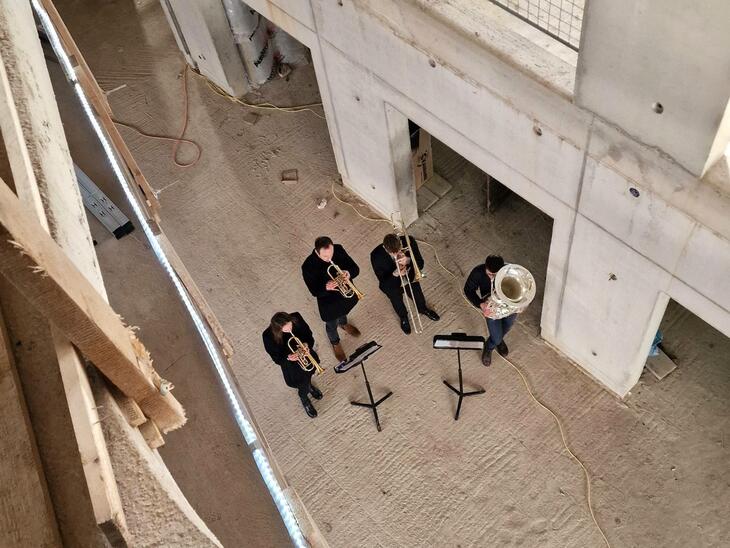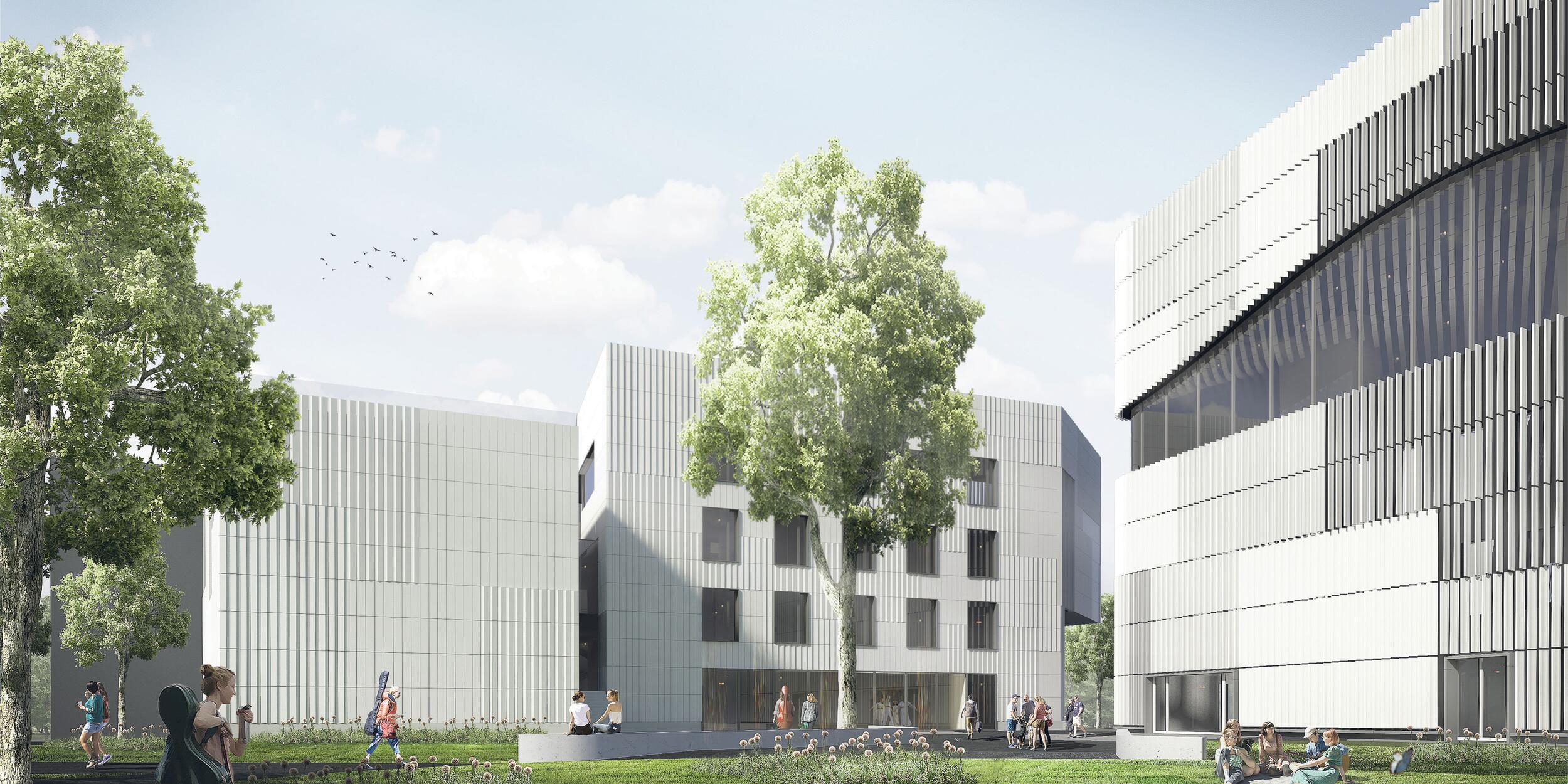
+++ Study Information Days 2026 for many of our studies: all dates can be found in the event calendar! +++

On 27th February 2023, the foundation stone of the Mozarteum University at the Kurgarten (UMAK) was laid in an official ceremony. It marked the beginning of the implementation of a forward-thinking project that invests in the university education and research location of Salzburg, in the networking of art and academia, and in Salzburg's core competencies in the field of culture.
Contact
Bernhard Kaiser
+43 676 88122 342
bernhard.kaiser@moz.ac.at
Designed and planned by the renowned architectural firm Berger+Parkkinen (Paracelsus Bad), the UMAK – located at Schwarzstraße 26 – is spread across five storeys and a floor space of 1895m2. This state-of-the-art new building will see two completely different forms of music being created and practised side by side. The spacious, bright and acoustically optimised teaching, ensemble and rehearsal rooms will be dedicated to singing, singing pedagogy and choral activities, while an X-Reality Lab, the only one of its kind in Austria, will enable users to experiment with and produce expanded worlds of images, video and sound. The UMAK will also be home to an electronic studio for contemporary music composition and the Bach Choir Salzburg.
The total cost of the project comes to €22.3 million. The largest part of this is borne by the federal government at €15.4 million, with the state of Salzburg contributing €3.7 million. This state amount consists of a state subsidy of 2.5 million euros, an amount for academia and innovation strategy of €0.5 million, and a contribution of €0.7 million for the space to be shared with the Bach Choir. The Mozarteum University will contribute €2.1 million of its own funds. The City of Salzburg and the Bach Choir Salzburg itself will jointly finance €1.1 million.
The UMAK is part of an urban design that ties in with the Baroque, Gründerzeit and 20th century architecture of the surrounding area, while also striving to create a connection between the Kurpark and the bustling cityscape. To this end, the UMAK is divided into two structures whose cascading height and size build a visual bridge between the closed development of the Auerspergstraße and the open structure on Schwarzstraße. Thanks to the clear, instantly identifiable architectural language, the UMAK, together with the Paracelsus Baths, will in future form a focal point at the historic heart of the city of Salzburg. The design paid particular attention to the form and layout of the Kurgarten, with its former fortifications and the accentuation of open spaces. The comings and goings of a large student population, along with the stream of visitors to the baths and spa house, should lead to a sustainable revitalisation of the northwestern area of the Kurgarten.
As a university building, the Mozarteum University at the Kurgarten will be open to the public and, with its small café, will also offer culinary delights. The interior design centerpiece of the building is a large atrium that will be flooded with natural light. The mighty cantilever of the upper floors above the entrance area emphasises the importance of the square in front and provides a view of the neighbouring Paracelsus Baths & Spa. The division of the building into two structures allows for the height and dimensions of each room to be optimised for their specific use.
To emphasise the ensemble effect with the Paracelsus Baths, the facade system of the UMAK also consists of curtain-type ceramic facade panels. In contrast to the façade of the Paracelsus Baths, however, a closed, rear-ventilated ceramic façade is used for the UMAK. The development of this special facade is an expression of the predominantly musical use of the building, which is accompanied by specific requirements for daylight and sound insulation: naturally lit individual rooms with window ventilation, halls with glazing, studios without daylight.
Despite the complex technical requirements for the building, the planning focused on sustainable flexibility in the use of the building to allow for possible shifts in the use of the spaces in the long term. In addition, the pronounced compactness of the two structures, with their favourable ratio of exterior surface are to interior space, supports the sustainability of the new building by minimising heat loss.